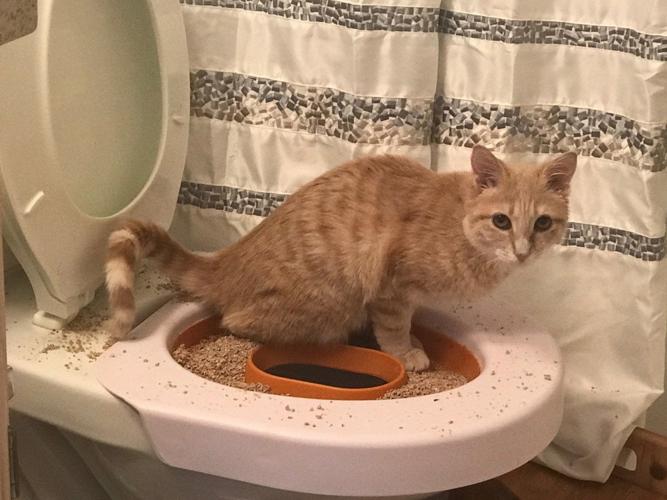We've stumbled upon this great article involving Can You Flush Cat Poop Down The Toilet? below on the web and thought it made perfect sense to discuss it with you in this article.
Intro
As feline owners, it's important to be mindful of just how we get rid of our feline close friends' waste. While it might appear hassle-free to flush cat poop down the toilet, this practice can have damaging effects for both the setting and human health.
Environmental Impact
Flushing cat poop introduces hazardous pathogens and bloodsuckers right into the supply of water, posturing a considerable danger to water environments. These pollutants can adversely affect aquatic life and compromise water quality.
Wellness Risks
Along with ecological worries, flushing cat waste can also pose wellness threats to human beings. Pet cat feces may consist of Toxoplasma gondii, a bloodsucker that can create toxoplasmosis-- a potentially serious illness, specifically for expecting women and people with weakened immune systems.
Alternatives to Flushing
Fortunately, there are safer and extra liable methods to throw away feline poop. Consider the adhering to choices:
1. Scoop and Dispose in Trash
One of the most usual method of throwing away cat poop is to scoop it into an eco-friendly bag and toss it in the trash. Make sure to make use of a devoted clutter scoop and throw away the waste promptly.
2. Use Biodegradable Litter
Choose eco-friendly pet cat clutter made from products such as corn or wheat. These clutters are environmentally friendly and can be securely thrown away in the garbage.
3. Bury in the Yard
If you have a yard, think about burying cat waste in a designated location far from veggie yards and water resources. Make certain to dig deep enough to stop contamination of groundwater.
4. Set Up a Pet Waste Disposal System
Purchase an animal waste disposal system especially created for pet cat waste. These systems utilize enzymes to break down the waste, decreasing odor and environmental impact.
Final thought
Accountable family pet possession expands past providing food and sanctuary-- it likewise includes proper waste administration. By refraining from flushing feline poop down the bathroom and selecting alternative disposal methods, we can reduce our environmental impact and secure human health and wellness.
Why Can’t I Flush Cat Poop?
It Spreads a Parasite
Cats are frequently infected with a parasite called toxoplasma gondii. The parasite causes an infection called toxoplasmosis. It is usually harmless to cats. The parasite only uses cat poop as a host for its eggs. Otherwise, the cat’s immune system usually keeps the infection at low enough levels to maintain its own health. But it does not stop the develop of eggs. These eggs are tiny and surprisingly tough. They may survive for a year before they begin to grow. But that’s the problem.
Our wastewater system is not designed to deal with toxoplasmosis eggs. Instead, most eggs will flush from your toilet into sewers and wastewater management plants. After the sewage is treated for many other harmful things in it, it is typically released into local rivers, lakes, or oceans. Here, the toxoplasmosis eggs can find new hosts, including starfish, crabs, otters, and many other wildlife. For many, this is a significant risk to their health. Toxoplasmosis can also end up infecting water sources that are important for agriculture, which means our deer, pigs, and sheep can get infected too.
Is There Risk to Humans?
There can be a risk to human life from flushing cat poop down the toilet. If you do so, the parasites from your cat’s poop can end up in shellfish, game animals, or livestock. If this meat is then served raw or undercooked, the people who eat it can get sick.
In fact, according to the CDC, 40 million people in the United States are infected with toxoplasma gondii. They get it from exposure to infected seafood, or from some kind of cat poop contamination, like drinking from a stream that is contaminated or touching anything that has come into contact with cat poop. That includes just cleaning a cat litter box.
Most people who get infected with these parasites will not develop any symptoms. However, for pregnant women or for those with compromised immune systems, the parasite can cause severe health problems.
How to Handle Cat Poop
The best way to handle cat poop is actually to clean the box more often. The eggs that the parasite sheds will not become active until one to five days after the cat poops. That means that if you clean daily, you’re much less likely to come into direct contact with infectious eggs.
That said, always dispose of cat poop in the garbage and not down the toilet. Wash your hands before and after you clean the litter box, and bring the bag of poop right outside to your garbage bins.
https://trenchlesssolutionsusa.com/why-cant-i-flush-cat-poop/

We were made aware of that editorial on How to Dispose of Cat Poop and Litter Without Plastic Bags from a friend on another blog. Don't hesitate to set aside a second to promote this page if you enjoyed it. Many thanks for your time. Visit us again soon.
At This Website